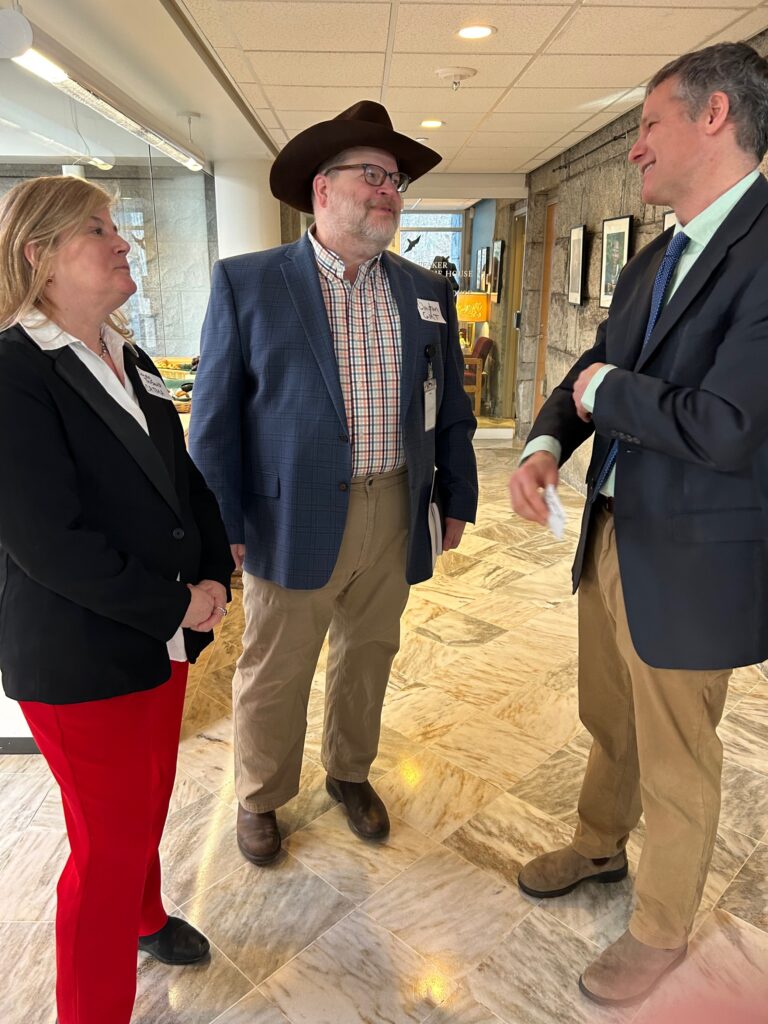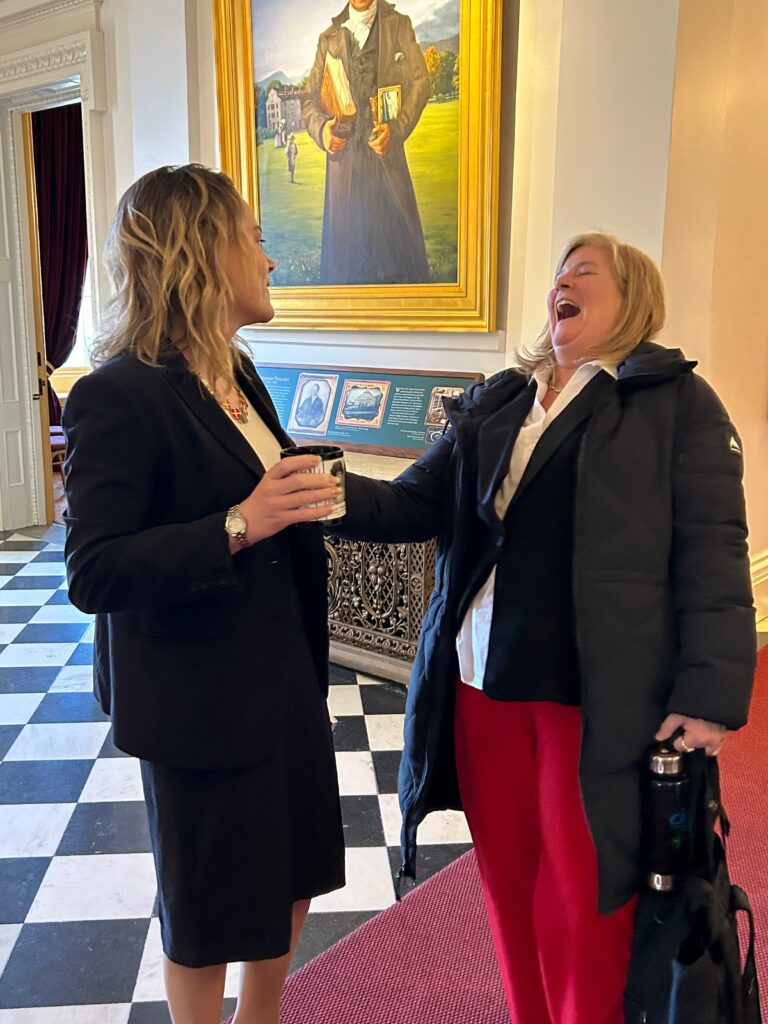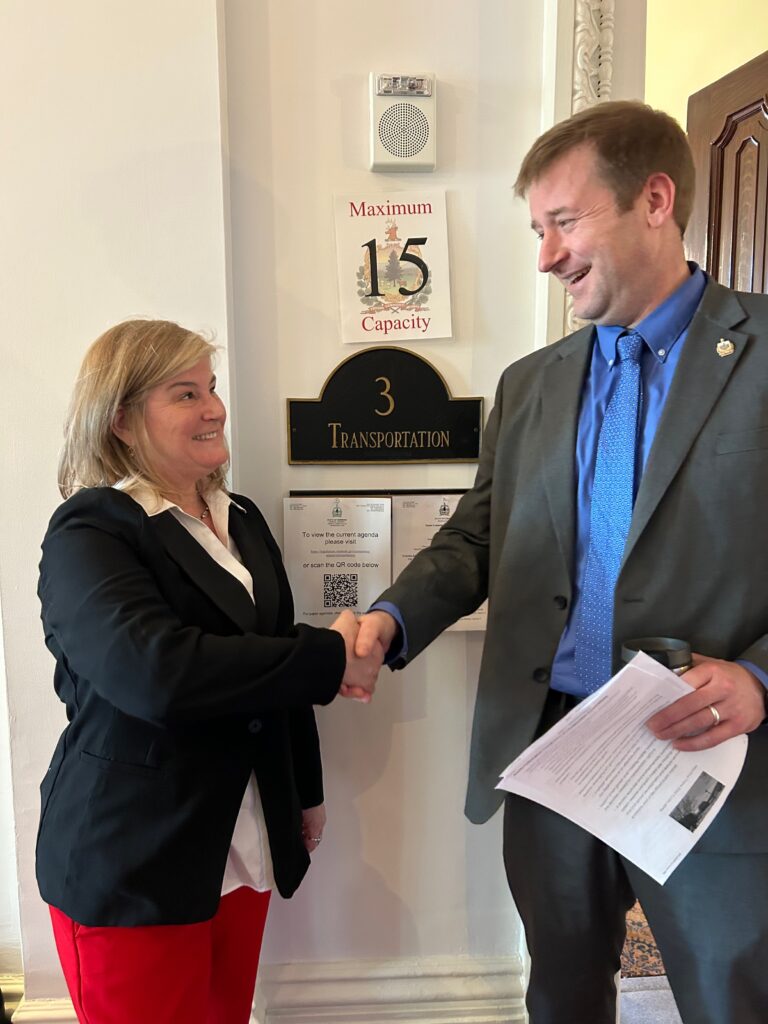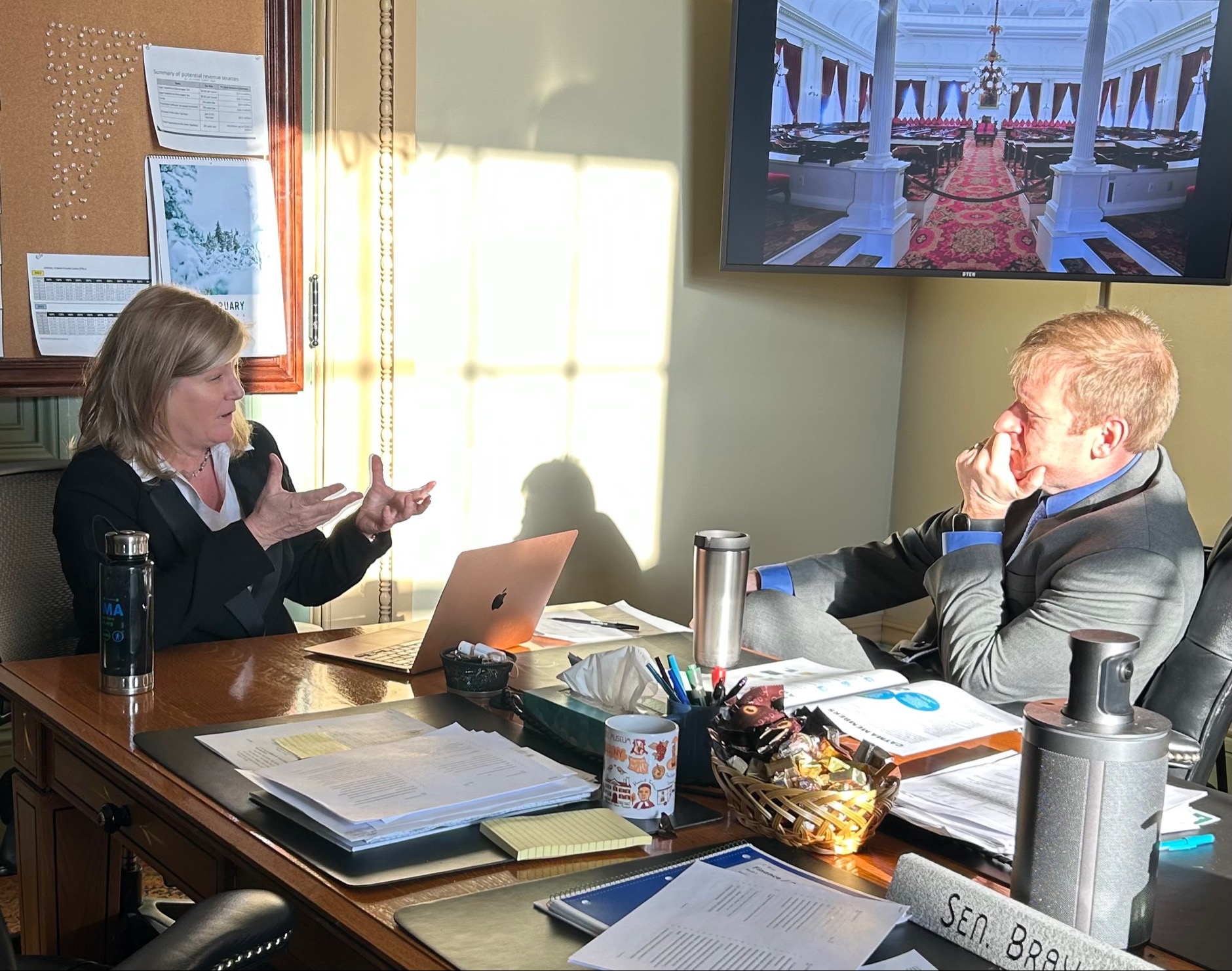In February, CATMA’s Executive Director, Sandy Thibault spent some time at the Vermont State House to advocate for mobility options in Chittenden County and a transportation system that works for all Vermonters and our environment. She joined members of the Transportation for Vermonters Coalition at the State House last week to inform Legislators on the need for more sustainable, accessible and affordable transportation.

The Vermont House Transportation Committee heard testimony last week from transportation organizations, including CATMA. Sandy shared an overview of CATMA, its Mission, insight on employer transportation challenges, and introduced a definition for Transportation Demand Management (TDM). Nationally, CATMA and the Association for Commuter Transportation are working on getting a definition of TDM into federal legislation.
TDM is a program of information, encouragement, and incentives provided by local or regional organizations to help people know about and use all their transportation options to optimize all modes of travel in the system.
According to Sandy, creating a federal definition of TDM “creates clarity for types of transportation projects that qualify as TDM or TDM Strategies. It also eliminates funding eligibility disparities in different regions of the country for various transportation programs.” A federal definition of TDM would ultimately result in more funding for better transportation options for all Vermonters.
In addition to testifying at the House Transportation Committee, Sandy recently met with Senator Thomas Chittenden in conjunction with the T4VT Coalition’s inaugural Coffee and Lobby Day at the State House. They discussed creating access to alternate transportation options in less urban areas such as Grand Isle and Saxon Hill in Essex, the status of bikeshare and strategies for making fare-free transit more permanent.
Coffee & Lobby Day was organized by the Transportation for Vermonters Coalition (T4VT), a cross-sector coalition of over two dozen members and partners advocating for “safe streets, access to clean transportation and sustainable funding.”
These recent visits to the State House are examples of how CATMA “connects the dots” between State and Municipal Government, businesses, and other organizations. Maintaining, improving and expanding transportation options for all types of commuters requires many connections and persistent networking such as meeting lawmakers at T4VT Lobby and Coffee day.




